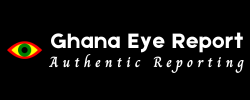By Florentina Adu
For much of the 20th century, corporate workplaces across the globe were defined by rigid gender roles. Leadership was overwhelmingly male, women were concentrated in clerical or support roles, and deeply entrenched stereotypes limited opportunities. However, over the past few decades, globalization, activism, legal reforms, and shifting social norms have transformed how gender is perceived and experienced in professional spaces. Today, while significant progress has been made in diversifying workplaces, persistent inequalities highlight the ongoing need for reform. This article explored how gender dynamics in the corporate environment are evolving, the progress achieved, the challenges that remain, and the pathways to a more inclusive future.
One of the most visible changes in the workplace is the increasing representation of women across all levels of employment. Women’s participation in the labour force has steadily risen, and their presence in leadership roles-though still unequal, has improved significantly. For instance, McKinsey’s Women in the Workplace 2023 report notes that women now occupy 28% of C-suite positions in North America, up from previous years (McKinsey & Company, 2023). This shift challenges the long-standing stereotype of corporate leadership as a male domain and underscores how organizational structures are becoming more inclusive.
In addition to leadership roles, women are also increasingly represented in traditionally male-dominated sectors such as finance, engineering, and technology. This is partially due to deliberate recruitment strategies and broader educational access. Such progress demonstrates that gender diversity is not only a matter of fairness but also a contributor to business performance and innovation.
The growing adoption of Diversity, Equity, and Inclusion (DEI) policies has been a critical driver of gender transformation in workplaces. Many corporations are investing in mentorship programs, equal pay audits, family-friendly benefits, and leadership pipelines designed to support women and gender minorities. Beyond compliance, DEI initiatives are increasingly tied to business outcomes. McKinsey’s Diversity Wins report (2020) found that companies with more gender-diverse executive teams were 25% more likely to achieve above-average profitability.
Moreover, the COVID-19 pandemic accelerated conversations around flexible working arrangements, which disproportionately benefit women, who often carry greater caregiving responsibilities. Hybrid and remote work have become new levers for gender equity, giving more employees-especially women-the opportunity to balance professional and personal responsibilities more effectively.
Despite these gains, gender inequities remain entrenched in corporate environments. The global gender pay gap is a clear example: on average, women earn about 20% less than men for comparable work (World Economic Forum, 2024). Furthermore, the “broken rung” phenomenon continues to hinder women’s progression, with fewer women being promoted into managerial positions compared to their male counterparts. This bottleneck contributes to the underrepresentation of women at senior levels.
Leadership stereotypes also persist, with assertive women often perceived more negatively than men demonstrating similar behaviours. Additionally, women frequently experience workplace harassment, micro aggressions, or exclusion from informal networks that are crucial for career advancement. These subtle yet powerful barriers highlight the importance of tackling not just structural inequalities but also cultural biases that shape everyday workplace experiences.
Looking ahead, the changing face of gender in workplaces is likely to be shaped by three key trends. First, the rise of hybrid and remote work will continue to create opportunities for greater inclusion, though it may also reinforce inequalities if not managed carefully. Secondly, companies will face growing pressure from stakeholders-employees, consumers, and regulators to publish gender representation data and demonstrate accountability. Third, men are increasingly recognized as important allies in advancing gender equity, with initiatives encouraging male leaders to challenge stereotypes and share caregiving responsibilities.
Together, these shifts point toward a future in which gender is understood less as a barrier and more as a dimension of diversity that enriches corporate culture and performance.
The workplace is undergoing a profound transformation in how it understands and manages gender. While progress in gender representation, leadership, and policy reform is undeniable, persistent challenges such as pay inequities, promotion gaps, and workplace biases highlight that the journey is far from over. Importantly, the evolving conversation now acknowledges intersectionality and the need for systemic cultural change alongside policy interventions.
The “changing face” of gender in today’s workplace is thus both a reflection of broader societal shifts and a call to action. For corporations, embracing gender diversity is not just a moral imperative but a strategic advantage that fuels innovation, resilience, and long-term growth. The task ahead is to ensure that this transformation is sustained, inclusive, and reflective of the diverse realities of all employees.
REFERENCES
Crenshaw, K. (1991). Mapping the Margins: Intersectionality, Identity Politics, and Violence against Women of Color. Stanford Law Review, 43(6), 1241–1299.
McKinsey & Company. (2020). Diversity Wins: How Inclusion Matters.
McKinsey & Company. (2023). Women in the Workplace 2023.
World Economic Forum. (2024). Global Gender Gap Report 2024.
Share Us




